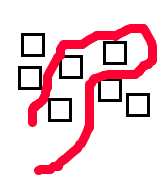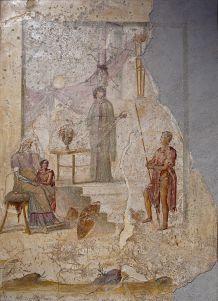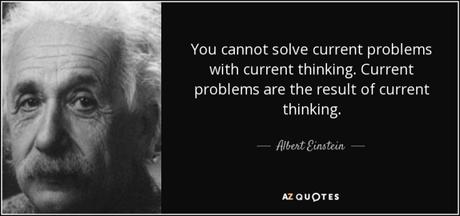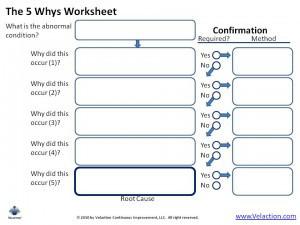In many books about innovation, it is stated that "You just have to be willing to challenge the assumptions of your industry, ask fresh questions, and -get this - embrace your humanness." Daniel H. Pink
Such calls are completely inadequate. Moreover, it suggests that the detection of assumptions is simple. On the contrary, the nature of assumptions is that they are mostly hidden, not easily accessible. Let's have a more detailed look.
An assumption is (a willingness) to accept something as true without question or proof. This definition assumes that the thinker is aware of his assumption, but he accepts it for practical reasons, as a working hypothesis. That is totally acceptable.
However, mostly a thinker is not at all aware of the assumptions he takes with him.
In that context, we better speak of hidden assumptions. A hidden, tacit or implicit assumption is an assumption that includes the underlying agreements or statements made in the development of a logical argument, a course of action, decision, or judgment that are not explicitly voiced nor necessarily understood by the decision maker or judge.
In Design Your Own Creativity Techniques we presented you a model for creative thinking:
All thinking takes place within a Logical Bubble. The boundaries of the logical bubble are formed by assumptions. The term was first coined in Edward de Bono's book Future Positive (1979). All thinking takes place within a perception space, within that space everything looks logic from the perspective of the thinker. The logic bubble is formed by values about how the world should be, assumptions about how the world is as is, his education, her experiences and cultural luggage. It explains phenomena like mental inertia or functional fixedness.
Key Word Density
A rather easy way to spot assumptions in policy papers is to use a Word Counter and check for keyword density.
An example: In an annual plan of the Department of Economics and Training of a large international port, the next year there will be extra attention to reducing school absenteeism. In almost every section of the plan, the issue returns in one or another modality (prosecution of parents, surveillance around schools and popular places, compulsory reporting of compulsory education officials, the involvement of the police, instructions for teachers, fines for absent children, etc). Assumption: repression will cure school absenteeism. Reducing school absenteeism will lead to less unemployment and by that, to economic prosperity.
Wouldn't it?
Negative Space


- Cassandra situation. Participants are working on available or easily accessible information, but not on relevant information. And if they do recognize their need for relevant information, it is not available or they do not know how to obtain that information. It results in untested assumptions.

- Concept Fan. An unusual application of a Concept Fan is to discover discrepancies between what is said (Espoused theory) and what factually is done (Theory-in-use). An example: A municipality wanted to change its approach to problem neighbourhoods. First, the emphasis was placed on the renovation of homes, now measures will be taken to make the neighbourhood more economically viable as well (Espoused theory). However, analysis with a concept fan showed that there are still a lot of actions and ideas for renovating homes, but only a few that are directed at economic activities (Theory-in-use).
Current Thinking Checklist

The edges of the logic bubble can be identified in a more systematic way by using the Current Thinking Checklist:
- What are the Dominant Ideas?
- What is Taken for Granted?
- What is supposed to Be Avoided at all times?
- What forms the Boundaries of the thinking?
- What is supposed to be Essential?
The Five Whys
The Five Whys is an iterative interrogative technique used to explore the cause-and-effect relationships underlying a particular problem. The primary goal of the technique is to determine the root cause of a defect or problem by repeating the question "Why?" The real root cause should point toward a process that is not working well or does not exist.

Unexperienced users will often provide answers that point towards classical answers such as not enough time, not enough investments, or not enough manpower. These answers may be true, but they are out of our control. Therefore, instead of asking the question why? ask why did the process fail? A key phrase to keep in mind in any 5 Why exercise is "people do not fail, processes do". Root Cause Analysis and TRIZ based Cause and Effect Chain Analysis are more elaborated approaches to finding assumptions in mostly technical systems.
Critical Thinking and Argument Maps
An Argument Map shows a contention (or conclusion), supporting arguments and objections, and an inference objection.

Argument maps can also show co-premises, objections,
counterarguments, rebuttals and lemmas fused with a concept map. See also an example of a Critical Thinking Checklist
The tools mentioned above try to catch the hidden assumptions directly but are rather poor in their effectiveness. Better to escape a thinking pattern (1->2->3) with a Provocative Operation. A provocative operation is a deliberate attempt to escape standard thinking. There are several techniques available, like Lateral Thinking, TRIZ, Anti-conventional Thinking and Biomimicry. Once the thinking pattern is broken, it becomes clear what the assumptions have been, but in hindsight.
A major obstacle that prevents us from recognizing assumptions is social rejection. By not thinking within the boundary conditions of logic and the unconscious commonly shared tacit presuppositions you violate a social norm.
However, all inventions, technological breakthroughs, disruptive innovations, innovative business model, paradigm shifts and blue ocean strategies can ultimately be traced back to not accepting the taken-for-granted assumptions in the industry or scientific community.
Therefore, hack assumptions.

